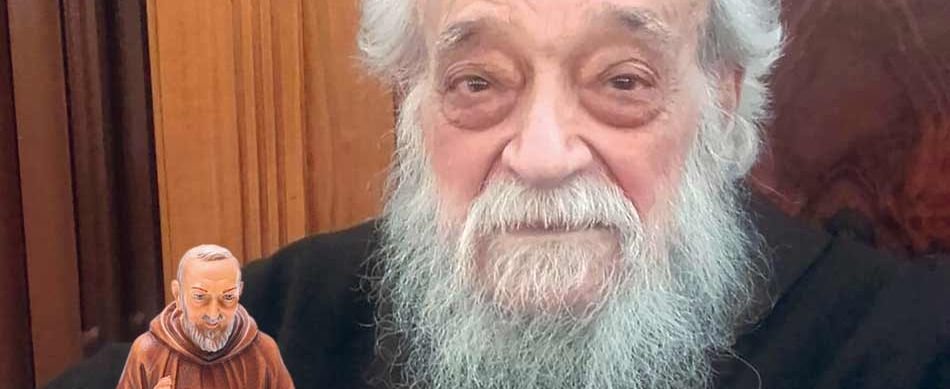FATHER Giuseppe Ungaro, who as you might remember is 99 years old and sits next to me during meals, often talks about Padre Pio. Fr. Giuseppe met the saint of Pietrelcina several times, and the Capuchin friar was even his confessor. Sometimes, whenever I give in to the temptation to stir Fr. Giuseppe up a bit, I tell him that Padre Pio, despite being a saint, often had a bad temper, and that many people complained that he had refused to listen to their confessions and had even sent them away unceremoniously. “This happened,” Fr. Giuseppe says with indignation, “because those people were not really sorry for their sins. They were going to confession either out of curiosity or because they wanted to boast to their friends that they had gone to the famous stigmatized friar. In reality, these people did not see Padre Pio as a ‘minister of penitence’, but rather as a ‘circus attraction’, and therefore his anger was totally justified.” Fr. Giuseppe is very proud of having had a saint as a confessor, and who can blame him?
Hardly a year goes by that a story or another arises in connection with the most famous Capuchin friar in history. However, this year is more important than others because it marks not only the 50th anniversary of his death (which occurred on 23 September 1968), but also the 100th anniversary of the appearance of his stigmata – the supernatural phenomenon most closely associated with him.
On the morning of 20 September 1918, after having celebrated Holy Mass in the Church of Our Lady of Grace in San Giovanni Rotondo, Padre Pio retired to the choir stalls for his usual thanksgiving. In the absolute silence of the church he prayed with mind and heart totally dedicated to his love for the Blessed Sacrament. What happened next can best be told in the simple, unadorned words of Padre Pio himself which he expressed in a letter to his spiritual director, Father Benedetto a little over a month afterwards. “It all happened in a flash. While all this was taking place, I saw before me a mysterious Person, similar to the one I had seen on 5 August, differing only because His hands, feet and side were dripping blood. The sight of Him frightened me: what I felt at that moment is indescribable. I thought I would die, and I would have died if the Lord had not intervened and strengthened my heart which was about to burst out of my chest. The Person disappeared and I became aware that my hands, feet and side were pierced and were dripping with blood.”
That precise moment Saint Padre Pio received the permanent and visible stigmata. In reality, he had first received the visible wounds years before, but only briefly. On the afternoon of September 7, 1910, a few weeks after being ordained a priest, while he was praying at the family farm in Piana Romana, Jesus and Mary appeared to him and the Lord gave him the gift of the stigmata. Pio was so terrified by phenomenon that he begged the Lord to withdraw it. From that time on the stigmata did not appear again until 1918, although their pain remained and was felt more acutely under certain circumstances and on specific days. And it is precisely in Piana Romana that Pope Francis will begin his one-day pilgrimage to the Italian town of Pietrelcina and then San Giovanni Rotondo on 17 March. The Pope will also visit the pediatric oncology ward of the hospital founded by the stigmatized friar.
Pope Francis has praised St. Pio several times as a devoted confessor, as a channel of God’s mercy and as a teacher of prayer. During the 2015-16 Year of Mercy the body of the saint was brought to the Vatican. On that occasion, Pope Francis declared to the thousands of pilgrims who had come to Rome to venerate the relics, “The great river of mercy that Padre Pio unleashed should continue through the prayers and, especially, the willingness to listen and to care for others shown by members of the Padre Pio prayer groups around the world. If prayer were just about finding a little peace of mind or obtaining something specific from God, then it would basically be motivated by selfishness. Prayer, rather, is a spiritual work of mercy which brings everything to the heart of God, and says to Him, ‘you take it, you who are my Father.’”
“Padre Pio,” Pope Francis added, “used to tell people that prayer is a key that opens God’s heart. God’s heart is not ‘heavily guarded’ with all sorts of security measures; you can open it with a common key – prayer.”
My fellow friar Fr. Giuseppe is a bit disappointed that he is too old to go to San Giovanni Rotondo to pay homage to his friend, but he is looking forward to seeing him personally, God willing, “in a few years’ time!”




